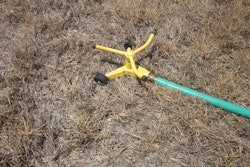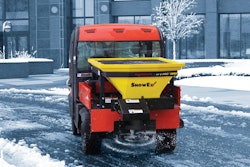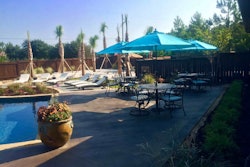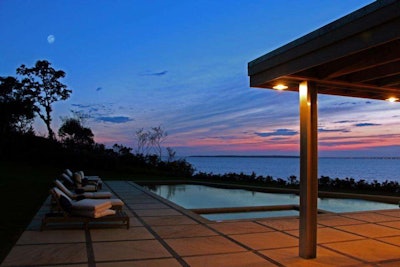 With views like these, it’s easy to see why people love to live by the coast.
With views like these, it’s easy to see why people love to live by the coast.Photo: Lear+Mahoney
To many, life by the water sounds like paradise, but it comes with a unique set of challenges for landscapers tasked with creating outdoor living spaces.
Between the wind, salt spray, threat of storms and environmental regulations landscapers have to keep in mind, working along coasts and waterways may seem like a niche market worth passing by.
Yet coastal landscapers are able to make things work and come together in beautiful combinations that meet all requirements while pleasing the client as well.
If your company is near a coastal area and you’re looking to expand your services to that market, here are a few of the main factors to consider.
Plant palette
The beach may be a sweet escape for people, but it’s not such a welcoming environment for plants. The sandy soil is not the most fertile and it can’t retain moisture very well. Consequently, plants with multiple tolerances are the vegetation of choice.
“I use hardy plants that can withstand high winds, salt spray (if applicable), flooding, drought, sandy alkaline soil and cold tolerant,” says Meg Whitmer, CEO of Meg Whitmer Landscape Architect in Tampa, Florida. “Most of these plants are native, but several ornamentals are also hardy enough for coastal location if planted in the right place.”
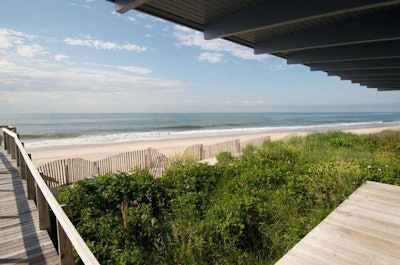 The plants that do well near the coast are salt-tolerant, drought-tolerant and wind-tolerant.
The plants that do well near the coast are salt-tolerant, drought-tolerant and wind-tolerant.Photo: Doug Young
Depending on the area in which you work, the type of plants you can suggest to clients may be dictated by local regulations or the environment itself.
“Northeast Florida doesn’t get the evergreens and you don’t get the fall colors of the Carolinas,” says Ladd Roberts, a landscape architect with Landwise Design in Jacksonville. “You go farther south, you get more of a tropical palette. In Jacksonville, we don’t get much of either of those. We’re predominantly stuck with the plants that have highly glossy leaves and palms that are native to the area.”
In the Pacific Northwest, succulents like Sedum spathulifolium and grasses like Miscanthus and Mexican feather grass tend to do well, along with lavender, heuchura, and dwarf Austrian pines. A successful groundcover to use is red mother-of-thyme.
While many of the hardy plants are not the most attractive, they can be used to create a protective layer for more ornamental plants that are closer to the house.
Lighting
Nearly all outdoor living area projects include landscape lighting to extend the amount of time the space can be used. However, living near the coast probably means there are creatures nearby that are easily distracted, or even threatened, by bright lights coming from homes.
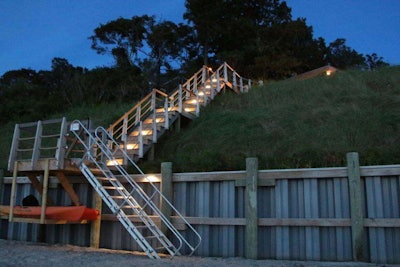 Lighting near coastal waters must be shielded and serve a purpose, such as lighting these stairs.
Lighting near coastal waters must be shielded and serve a purpose, such as lighting these stairs.Photo: Lear+Mahoney
Many areas require that lighting be shielded so it is not seen from the beach and serves a function, such as lighting a path.
“Here in the Hamptons, there are local regulations on what to use for lighting,” says Elizabeth Lear, co-owner of Lear + Mahoney Landscape Associates. “We tend to not over-light. We use light for function closer to the house, in the dining or pool area. We wouldn’t use lighting in the dunes themselves.”
Some states, like Florida, outline what lighting is acceptable and what is not, with sea turtles in mind.
“Certain types of light are more attractive and less attractive,” says Scott Lankford, owner of Lankford Associates in Seattle, Washington. “Bright white light is very attractive, so we stick with a softer warm lighting.”
Hardscaping
At sites near the ocean, the elements wear on everything and hardscaping is no exception.
On the West Coast, king tides and waves in general can crash down and deteriorate material over time.
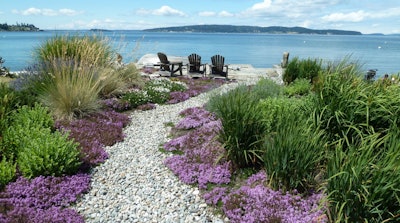 Using a hardscaping material like gravel allows the path to not be easily displaced.
Using a hardscaping material like gravel allows the path to not be easily displaced.Photo: Lankford Associates
“Hardscaping is set in a permeable base,” Lankford says. “You need a 2-inch gravel for walkways in those areas because it doesn’t get displaced and because it’s not mortared in, it’s easier to repair and replace. Large stones with an aggregate between them help hold things in place.”
Whitmer advises against using any type of metal with hardscaping, as it will corrode from the salt in the air. She prefers cast stone products, composite wood products and concrete pavers with a good sub-base.
As for Landwise Design, in order to comply with the Florida Department of Environmental Protection, their hardscaping materials must be frangible in the case of a hurricane so the material will break apart into smaller, less harmful pieces.
Storm safety
Speaking of storms, this is another component that must be taken into consideration when designing and installing along waterways.
Because plants in coastal areas must endure high winds, Roberts warns that brittle trees such as river birches are not a good choice. Slow-growing, sturdy trees can endure far better.
For spaces a little more inland, along sounds and estuaries, flooding is more of an issue than direct hits from hurricanes.
“If the client tells us this area stays wet, we either focus on wetland plants or, if we plant something there for just the good times, we alert the client that they are not flood-proof,” says Pam Lowney, a landscape designer with Lazy Weekends Landscaping in Edenton, North Carolina. “Some are willing to take the risk.”
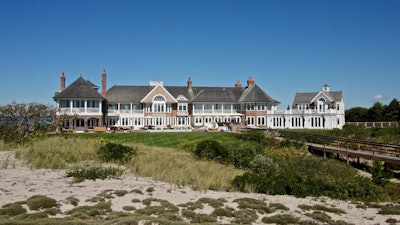 Beach front living comes with a fair amount of regulations and risks, but many find it still worth it.
Beach front living comes with a fair amount of regulations and risks, but many find it still worth it.Photo: Jeff Heatley
Winds can be tamed to a certain degree by mounding or planting a living screen of pines, junipers and conifers since their waxy foliage allows them to tolerate high winds.
“The mounds will bounce the wind up and over,” Lankford says. “We create a depression to keep the people and the fire pit down and out of the wind.”
While it is good to be proactive and design for what may come, Lear understands that there is no way of knowing what damage will result from storms.
She also knows that while coastal landscaping will always be demanding, the relaxing retreats designers and landscapers create can make all the extra work worthwhile.

